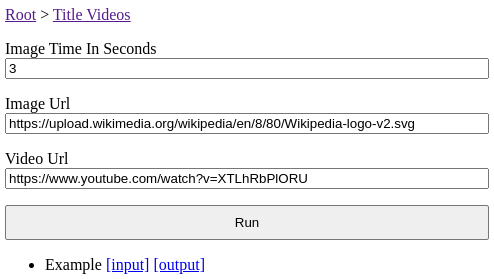We are happy to announce the latest release of our CrossCompute Analytics Automation System that you can use to turn scripts and Jupyter notebooks into web-based tools and runnable reports.
- crosscompute 0.9.2.3 is our development server that transforms notebooks and scripts into web-based tools and runnable reports.
- crosscompute-views-map 0.1.2.1 adds interactive maps to your reports.
- crosscompute-printers-pdf 0.3.2 adds batch PDF print functionality.
- jupyterlab-crosscompute 0.2.2 lets you prototype automated reports without leaving the JupyterLab environment.
- Documentation is online. Please see configuration.yml for available configuration options.
What’s New
crosscompute 0.9.2.3

display:
pages:
- id: automation
configuration:
design: input
- Each automation can now feature its
inputoroutputby default. Theinputoroutputwill be pre-filled using values from the first batch. Theautomationpage originally displayed a list of batches. To configure this setting, definedisplay.pages > id: automationas shown above. Setdesign=inputordesign=outputto include theinputoroutputat the top of theautomationpage. Setdesign=noneto revert to a simple list of batches. The default setting for theautomationpage isdesign=input.
display:
pages:
- id: output
configuration:
design: none
- The
input/output/log/debugpages now default todesign=flex-vertical, which includes variable labels and simple styling. To configure this setting, definedisplay.pages > id: input/output/log/debugas shown above. To remove the variable labels and styling, setdesign=none.
input:
variables:
- id: url
view: string
path: variables.dictionary
configuration:
label: URL
- If you don’t like the labels that are auto-generated from the variable ids, you can set each label explicitly by setting
configuration: label=YOUR-LABELas shown above.
environment:
batch: thread
environment:
batch: process
- Batches run concurrently, which means that your batches will run faster for each automation depending on the number of CPU cores on your machine. To configure this setting, define
environment.batchYou can choose whether to useprocessconcurrency orthreadconcurrency.
crosscompute-views-map 0.1.2.1
- This small update adds labels to both
map-mapboxandmap-pydeck-screengridfor compatibility with crosscompute 0.9.2.3.
crosscompute-printers-pdf 0.3.2
prints:
- format: pdf
configuration:
header-footer:
font-family: sans-serif
font-size: 8pt
color: '#808080'
padding: 0.1in 0.25in
skip-first: true
page-number:
location: footer
alignment: right
folder: ~/Documents/attachments/randomize-histograms-{timestamp}
name: me{mean}-va{variance}-vc{value_count}-bc{bin_count}.pdf
- Print configuration has been moved to the configuration file. Previously, you had to configure the print format and print folder from the command-line. The command-line options have been removed. Please see above for the configuration format.
- Multiple print configurations are possible. The only required parameter is
format. Currently, onlyformat=pdfis supported.
crosscompute --print
- With the print configuration in the configuration file, you can simply run
crosscompute --printto generate all the prints.
prints:
- format: pdf
configuration:
header-footer:
font-family: sans-serif
font-size: 8pt
color: '#808080'
padding: 0.1in 0.25in
skip-first: true
page-number:
location: footer
alignment: right
- Add page numbers by defining
prints > configuration.page-number. You can choose to have your page numbers in the header or footer and on the left or right hand side. You can configureheader-footerstyling inprints > configuration.header-footer. - To skip page numbers on the first page, specify
prints > configuration.header-footer.skip-first=true.
prints:
- format: pdf
folder: ~/Documents/attachments/randomize-histograms-{timestamp}
name: me{mean}-va{variance}-vc{value_count}-bc{bin_count}.pdf
- You can customize the folder name and file name of each print using variables from your automation as shown above.
jupyterlab-crosscompute 0.2.2

- This small update saves your notebooks when you click
Launch.
Where We Need Help
- If you have an analysis or computational model that could be useful as a web-based tool or report, please message request@crosscompute.com.
- We need help writing tutorials on how to create analytics content using our framework. Please see https://github.com/crosscompute/crosscompute-docs for issues and message contact@crosscompute.com.